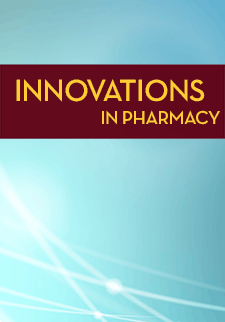Prevalence of Sodium Glucose Cotransporter 2 (SGLT-2) Inhibitor Prescribing in Patients with Type 2 Diabetes Mellitus and Reduced Estimated Glomerular Filtration Rate
Kayla Chonko
Cleveland Clinic
Giavanna Russo-Alvarez
Cleveland Clinic
Diana Isaacs
Cleveland Clinic
Lu Wang
Cleveland Clinic
Amanda Soric
Cleveland Clinic
DOI: https://doi.org/10.24926/iip.v14i2.5456
Keywords: Type 2 diabetes; sodium-glucose cotransporter-2 (SGLT-2) inhibitors; chronic kidney disease (CKD); prescribing prevalence
Abstract
Sodium glucose cotransporter 2 (SGLT-2) inhibitors have demonstrated benefit in people with type 2 diabetes mellitus (T2DM) and chronic kidney disease (CKD), including slowing the progression of CKD and lowering the risk of kidney failure and death. Despite this evidence, literature suggests SGLT-2 inhibitors are underutilized in this population. To assess prescribing practices and identify potential variables predictive of SGLT-2 inhibitor prescribing, a non-interventional, retrospective, cross-sectional study was conducted in patients with T2DM and reduced estimated glomerular filtration rate (eGFR). The primary outcome compared prevalence of SGLT-2 inhibitor prescribing in patients with T2DM and eGFR of 30-44 mL/min/1.73m2 to patients with T2DM and eGFR 45-59 mL/min/1.73m2. The secondary outcome described possible predictors of prescribing SGLT-2 inhibitors in this population. Of the 9,387 patients identified with T2DM and reduced eGFR, an SGLT-2 inhibitor was prescribed to 324 (12.2%) patients with eGFR of 30-44 mL/min/1.73m2 versus 799 (11.9%) patients with eGFR of 45-59 mL/min/1.73m2. Patients more likely to be prescribed SGLT-2 inhibitors were younger, male, had a higher body mass index (BMI), a higher hemoglobin A1c (HbA1c), were on other antihyperglycemic medications, had concomitant cardiovascular disease, or had concomitant heart failure. This study found no significant difference in prevalence of SGLT-2 inhibitor prescribing between patients with T2DM and eGFR 30-44 mL/min/1.73m2 versus eGFR 45-59 mL/min/1.73m2 (p=0.70). Further exploration into the causes of low SGLT-2 inhibitor prescribing prevalence is warranted given the growing evidence supporting the use of these agents in patients with T2DM and reduced renal function.



